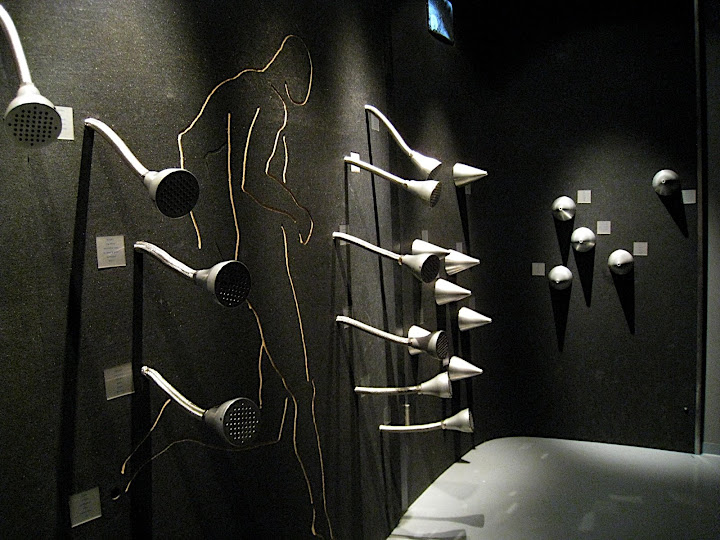
Our first stop this morning was
Haus der Musik. On the first floor of this interactive museum is a series on this history of the
Wiener Philharmonik (Vienna Philharmonic), its colorful past (and its colorful maestros), and the renowned
Neujahrskonzert (New Year's Concert). The kids' favorite on this floor was the
Walzerwürfelspiel (dice game of Waltz). I call it the Waltz Monte Carlo. They rolled two dice several times, and a melody (drawn randomly from a library...and in Physics lingo, this is a Monte Carlo) was played after each roll. At the end, the full composition was played. Another one of the kids favorites , amongst different stations featuring the properties and physics of sound, was conducting the Wiener Philharmonic on the third floor. The baton had a transmitter and the musicians on the TV screen played to the baton's motion. The third floor also has excellent exhibitions of composers who spent time in Vienna: Haydn, Mozart, Beethoven, Schubert, Strauß, Mahler, Berg, Schönberg, Webern. We learned that Schubert was so poor that he composed most of his music without the aid of a piano (which he couldn't afford to own).




We had lunch at
Figlmüller, which is famous for its
Wiener Schnitzel. We were lucky as there was not a long line when we got there. By the time we left, it was much longer in the narrow alley. We order two schnitzels to share between the four of us. They were huge, and we could not finish them. The schnitzels were good, but the frying took the juice out of the pork. So our Figlmüller schnitzels were not as good as the ones that we had at Schloß Schönbrunn, which were juicier.


After lunch we walked down to
Donau (Danube in English). We expected to see
Donau so blau, so schön und blau (Danube so blue, so beautiful and blue)
as in the first verse in the chorus version of Strauß's
An der schönen blauen Donau (the Blue Danube), and were disappointed by the view of a brown, muddy river.
We completed
our unfinished tour of the Ring in the afternoon. We took tram #2 to the
Wiener Stadtpark (city park), where we walked around and visited a few monuments including those of Schubert and Johann Strauß (son). The kids had a brief "break" at the playground before we boarded another #2 tram to the
Burggarten, where we visited the Mozart statue. We spent the rest of the afternoon in the surrounding area such as
Heldenplatz,
Hofburg, and
Michaelerplatz.






It is simply iresistible ....we stopped for an
apfelstrudel (Glenda),
eis (kids) and
zitronetorte (yours truly) before heading back to the apartment for a nice home-cooked meal.



